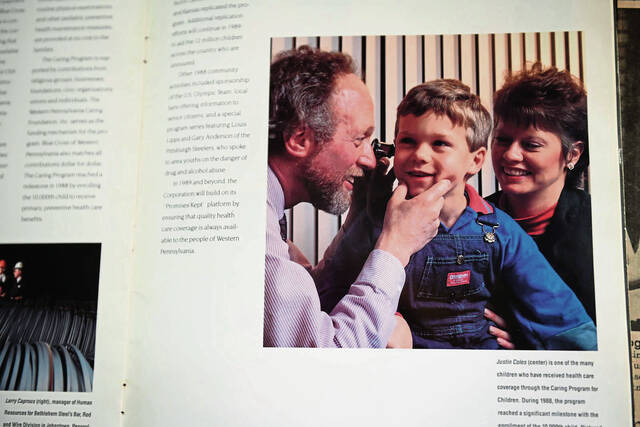Editorial: Legacy of CHIP is more than medical
Pennsylvania’s Child Health Insurance Program is now 30 years old.
Since 1992, it has been a pathway to healthy lives for children in the Keystone State and a guardrail protecting families. It was a model for the national CHIP program that did the same for kids and parents in other states.
It isn’t a surprise that it did things like make sure babies had well-child visits, rescued toddlers with ear infections and made it possible for school kids to get glasses so they could see the chalkboard. That was the design. The intersection of health and low-income finances was the point.
But it is worth looking at the larger impact, too.
One is economic. Anyone who has gotten a medical bill — whether for an office visit, a run to the emergency room or an actual hospital stay — knows that even the little things cost more than you would think. Health care is big business in Pennsylvania and nationwide.
Has CHIP changed that? That’s a complicated question. Correlation is not always causation. But maybe we can make a few leaps.
There has been a huge increase in the number of pediatricians. A 2020 Journal of the American Medical Association study found that from 2003 to 2019, the number of subspecialists — like pediatric cardiologists or endocrinologists — increased by 76.8%. However, the number of children remained at a fairly consistent 73 million or so in the same period.
This isn’t just CHIP, of course. It’s just one piece of an insurance puzzle that encompassed more Americans, but CHIP is an important part.
The numbers suggest that more people were able to go into pediatric medicine because more people were able to access it. That means more people were getting paychecks, more offices were opened paying more rent or building more facilities in a spreading spiderweb of economic impact created by letting low-income families see doctors.
But there is another relief with that coverage — a more personal one.
Having the safety net of medical insurance can relieve tension for parents. A study by the National Bureau of Economic Research showed CHIP programs didn’t just improve children’s health. They also had an impact on moms, who had less stress and were less likely to smoke and drink. That can snowball because stable parents mean a more stable home life, which can have an impact on children’s health.
Do we need more work on these programs? Absolutely. They aren’t cure-alls. But they are a great start — a good place to look at what has worked and build from there.
And it’s kind of nice to realize that 30 years ago, Pennsylvania leaders were able to do something worth expanding to help kids across the country.
Remove the ads from your TribLIVE reading experience but still support the journalists who create the content with TribLIVE Ad-Free.

